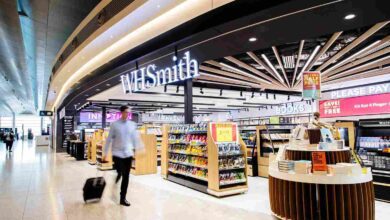ASOS losses narrow in FY25 amid cost cutting strategy
ASOS said savings from mothballing its US fulfilment centre, alongside renegotiated distribution contracts, helped raise the adjusted EBITDA margin to 5.3%

Register to get 1 free article
Reveal the article below by registering for our email newsletter.
Want unlimited access? View Plans
Already have an account? Sign in
ASOS has narrowed its adjusted losses before tax from £181.2m to £98.2m in the 52 weeks to 31 August, as cost reductions and a stronger full-price sales mix lifted profitability.
The online retailer delivered adjusted EBITDA of £131.6m for the year, up £51.5m on 2024. Gross margin rose to 47.1%, an increase of 370bps, supported by fewer markdowns and improved stock management.
ASOS said savings from mothballing its US fulfilment centre, alongside renegotiated distribution contracts, helped raise the adjusted EBITDA margin to 5.3%, up 250bps year-on-year. The improvement partly offset a decline in group sales.
The statutory loss before tax widened to £281.6m because of £183.4m of adjusting items, while property-related charges of £175.8m made up most of the total. The latter was largely linked to the suspension of operations at the US site. Much of the cost reflected non-cash impairments of tangible, intangible and right-of-use assets.
Other adjusting items included a £13.8m gain from the sale of a majority stake in the Topshop and Topman brands, a £5m provision for legal proceedings overseas and £16.4m connected to restructuring programmes.
Operational changes progressed across the year. The Test and React model accounted for more than 20% of own-brand sales, while production times for own-brand products fell by about 30% year on year. About 100 partner brands were added, and flexible fulfilment models scaled to more than 10% of third-party gross merchandise value.
Meanwhile, supply chain costs were down about 20% and further measures delivered in the second half are expected to support significant annualised savings in the 2026 financial year.
Customer numbers were lower than a year earlier, but retention improved among more profitable shoppers and average spend increased. New customers in the UK were about 10% higher year on year in early 2026.
Net debt reduced by more than £110m, supported by a convertible bond refinancing and proceeds from establishing the Topshop and Topman joint venture in the first quarter. A refinancing completed in the first quarter of 2026 provided £87.5m of additional liquidity. Free cash flow was £14m.
Looking ahead, ASOS expects gross merchandise value to improve through 2026. GMV is forecast to run 3% to 4% ahead of revenue as flexible fulfilment expands. The group expects further gross margin gains of at least 100bps to between 48% and 50%, and adjusted EBITDA of £150m to £180m. Free cash flow is expected to be broadly neutral.
The company said its medium-term goal remains sustainable profit growth, with an adjusted EBITDA margin of about 8% and capital expenditure of 3% to 4% of sales. It expects rising earnings and stronger cash flow to reduce net debt over time.
José Antonio Ramos Calamonte, chief executive of ASOS, said: “Three years later, the turnaround is well progressed: we’ve rebuilt our foundations, sharpened our focus, and we’re ready to reclaim our place as the most exciting destination for fashion-loving customers.”







